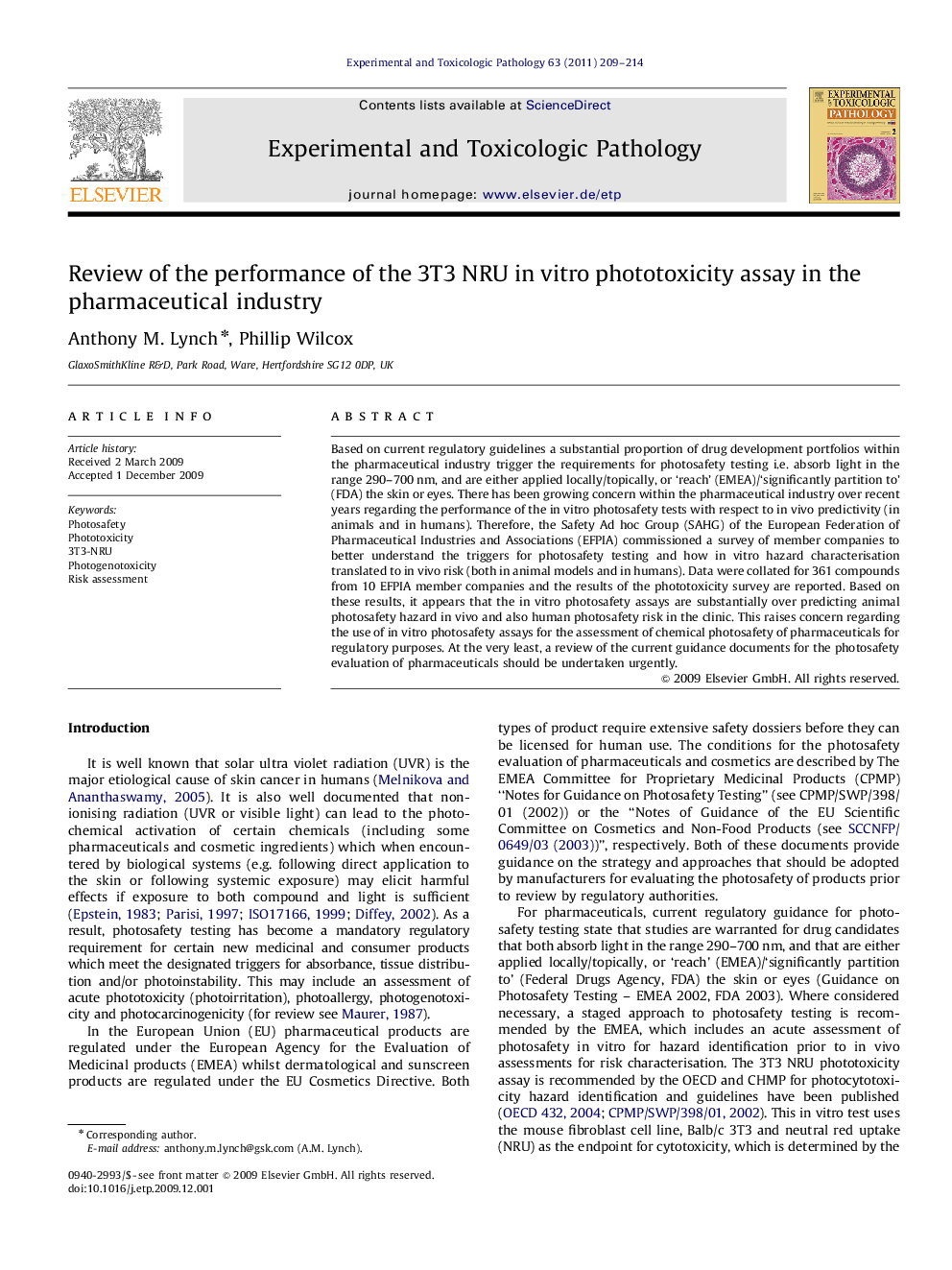| Article ID | Journal | Published Year | Pages | File Type |
|---|---|---|---|---|
| 2499520 | Experimental and Toxicologic Pathology | 2011 | 6 Pages |
Based on current regulatory guidelines a substantial proportion of drug development portfolios within the pharmaceutical industry trigger the requirements for photosafety testing i.e. absorb light in the range 290–700 nm, and are either applied locally/topically, or ‘reach’ (EMEA)/‘significantly partition to’ (FDA) the skin or eyes. There has been growing concern within the pharmaceutical industry over recent years regarding the performance of the in vitro photosafety tests with respect to in vivo predictivity (in animals and in humans). Therefore, the Safety Ad hoc Group (SAHG) of the European Federation of Pharmaceutical Industries and Associations (EFPIA) commissioned a survey of member companies to better understand the triggers for photosafety testing and how in vitro hazard characterisation translated to in vivo risk (both in animal models and in humans). Data were collated for 361 compounds from 10 EFPIA member companies and the results of the phototoxicity survey are reported. Based on these results, it appears that the in vitro photosafety assays are substantially over predicting animal photosafety hazard in vivo and also human photosafety risk in the clinic. This raises concern regarding the use of in vitro photosafety assays for the assessment of chemical photosafety of pharmaceuticals for regulatory purposes. At the very least, a review of the current guidance documents for the photosafety evaluation of pharmaceuticals should be undertaken urgently.
